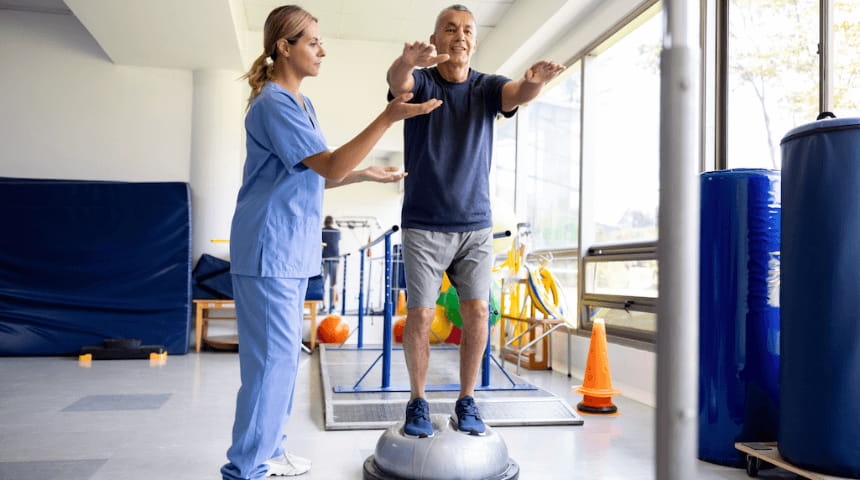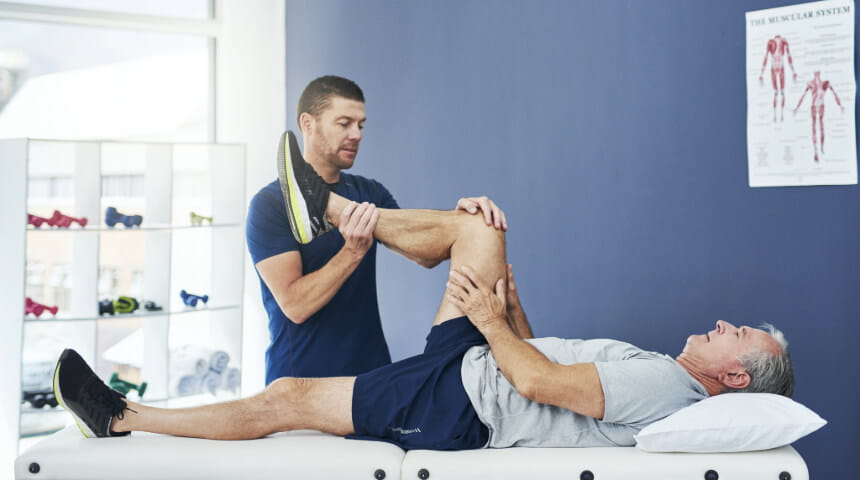With summer’s arrival, you may find yourself spending more time outdoors enjoying physical activities, from soccer and softball to running or cycling. And with a little preventive maintenance, you can avoid the sort of injuries that might derail your fun for weeks -- or even months.
Too often, part-time athletes neglect critical stretching before and after playing their favorite activity. That leaves the body vulnerable to all manner of sprains and strains. This is particularly true for those weekend warriors out there. It becomes increasingly difficult for your body to spring into action on Saturday morning after spending the rest of the week sitting in your car, couch or office chair.
In general, you should spend five to 10 minutes doing light aerobic activity to warm up before any strenuous activity. That should be followed by stretches to get your body ready to go. Those same stretches should also be done after you complete your activity to help avoid stiffness and soreness later.
Find Your Stretch
Stretches typically fall into two categories. Static stretches are those where you sit, stand or lie still while holding a single position for 30 to 60 seconds. Dynamic stretches are slow controlled movements that get your body ready for what’s about to come.
There’s debate over which is better, but research is increasingly demonstrating the benefits of dynamic stretching. You’re able to get your body moving, lowering risk of injury, through the same motions it will encounter once the fun starts.
To get the most out of your warmup, use stretches that target the muscles, ligaments and soft tissues that will be put under stress by the activity. Among the possibilities:
- Running: Focus on quadriceps, hamstrings, gluteus maximus, iliopsoas (a deep muscle group that helps move your hips) and calf muscles. But don’t neglect your upper body, with an emphasis on trunk rotation and arm swings.
- Soccer: Target hip flexors, quadriceps, calves, piriformis (a deep muscle in the buttocks), hamstrings, Achilles tendons and shoulders.
- Cycling: Stretches should focus on quadriceps, calves, IT bands, hamstrings, neck, shoulders and gluteus maximus.
- Weight training: Target shoulders, hips, neck, wrists and ankles. One easy warmup is to simply do your intended exercises, starting at lower intensity.
- Softball: Focus on calves, hamstrings, quadriceps, gluteus maximus, shoulders and back.
Common Injuries
Of course, there’s no way to guarantee you won’t get injured in any athletic endeavor. But a solid warmup and cool-down routine can help reduce the risk of injuries such as:
- Strains: Common muscle strains include pulled hamstrings, groin muscles and strained quads
- Sprains: These injuries occur when ligaments are pulled beyond their usual limits. Among the more common sprains: ankles, knees, wrists and elbows.
- Shin splints: This stress reaction in the lower leg is common among runners and soccer players.
- Back injuries: The back and spinal column is put under stress by almost every sports activity.
- Tennis elbow: This repetitive injury, which causes pain in the elbow, also is encountered by golfers.
- Hip flexor strain: These muscles are responsible for lifting the knee toward the trunk.
Remember Water
While warmup and cooldown stretches are critical for avoiding injuries, there are a couple other things to keep in mind. Wear sunscreen and clothing that’s appropriate and comfortable for your sport. And don’t forget about the liquids.
A lot of people don’t realize that you should start preparing for an inevitable water loss up to four hours before you start the activity. How much you should drink depends on te intensity and duration of your exercise.
Try taking your weight before you start and then again after you finish. You’ll see how much water weight you lost during your activity. That’s how much water you need to add to your daily intake, well before you start exercising. For longer activities lasting beyond an hour, you also may want to supplement with a sports drink containing sodium and glucose.
Keep in mind that a common factor in injuries is simply trying to do too much, too fast. This can happen, for example, when someone is preparing for a race. They start with the admirable goal of training for 12 to 16 weeks before the event. But then life happens. And they end trying to cram all that prep into four weeks or less and end up overloading their body.
Choose to Stay in Touch
Sign up to receive the latest health news and trends, wellness & prevention tips, and much more from Orlando Health.
Sign Up for HealthBeat





